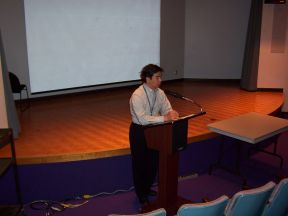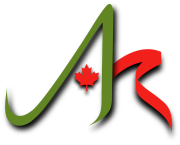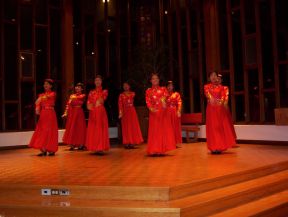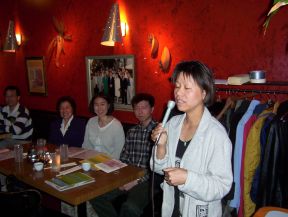Asian Heritage Month Celebrations 2003
The ten events were organized by the Ottawa Chapter of the Chinese Canadian National Council (CCNC) and its partners in celebration of Asian Heritage Month. The events were sponsored by Frank and Loretta Ling, Can Air World Inc., Yangtze Dinning Lounge, and Mekong Restaurant, with Senator Vivienne Poy acting as Honorary Patron. The Asian Heritage Month Committee (Monica Wu, Robert Yip, Yuen-Ting Lai, Willy Lee, Rupert Yeung, Jonas Ma, and Alek Choo) spent several months planning, organizing, and coordinating these events. The Committee wishes to thank its partners, Canadian Museum of Civilization, Children’s Museum, Canadian Museum of Nature, Ottawa Main Library and Club Saw Arts Court for their invaluable assistance. Appreciation is also extended to the Chinese Canadian Community News for publicizing the various events. To find out more about CCNC (Ottawa Chapter), please go to http://ottawaccnc.com/home.htm Come and join in and help make Asian Heritage Month 2004 bigger and better!
|
Mongolian dance performed by the Ottawa Chinese Arts Troupe was one of the many featured performances in the Spring Rainbow gala on May 3. |
After several months of preparation, Asian Heritage Month activities opened on May 3rd with "Spring Rainbow", a performance gala held at the First Unitarian Church of Ottawa. The variety show was a cultural mosaic that featured classical, popular and folk music from both sides of the globe. Eastern and Western cultures were exchanged as "Edelweiss" was played on the Chinese zither and "Red River Valley" was sung in Chinese. The audience was captivated by approximately 105 performers, some of whom danced gracefully in colourful traditional dress, others who sang beautifully in a chorus, and others still who played instruments such as the Greek bouzouki, the Chinese Zither and Er Hu. These talented performers were Helen Chu, the You-In Chorus, Elizabeth Nguyen, the Chinese Children Singers of Ottawa, Luba Pope, George Sapounidis, Eun-Hee Song, Ottawa Arts Troupe (Fan, Tibetan and Mongolian dances, Male Quartet), Cindy Yang, Fei Fei Yao and Fang-Yuan Ye. It was a magical evening enjoyed by both Chinese and non-Chinese alike, held before a stunning Ottawa River sunset backdrop and under the church’s magnificent modern architecture. |
|
| In partnership with the Canadian Museum of Civilization, a session on Chinese Wellness: Mind and Body was held on Saturday, May 10 in the museum’s Cascade Lounge. The first presenter, Dr. He, an acupuncturist, examined the theoretical view of acupuncture and demonstrated the application of the Chinese massage, Tuina. Next, Ms. Angela Fung and Ms. Julie Gordon, presented the origin and history of Qi Gong and demonstrated the amazing effects of energy transfer from one person to another. The last presenter, Mrs. Holly Heng explained some rudiment movements in Tai Chi with the assistance of her daughter Yen Heng and they both put on a demonstration for the enthusiastic audience who watched, listened and participated. These sessions provided some valuable information about Chinese health and wellness to everyone in the audience. |
 Ms. Holly Heng was one of the participants in the Chinese Wellness:Mind and Body held at the Canadian Museum of Civilization on May 10. |
|
|
Ms. Dora Nipp, author of the Historical Guide to the Chinatown in Ontario, presented a wonderful overview on the history of Chinese restaurants in Ontario on May 11, 2003 |
It was full house at the Shanghai Restaurant, one of the earliest in the city's Chinatown and a Trudeau favorite, on the evening of Sunday May11, Mothers Day. A perfect place and time for the Ottawa launch of the Historical Guide to Ontario's Chinatowns. With historical photo display, an introduction by author and historian Dora Nipp, story-telling by Mrs. Nancy Kwan and her son Ed who helps run the family restaurant, as well as a review of the Chinatown's development during the 70's and 80's, the launch was both intimate and enriching. Those present left with a deeper appreciation of history and a closer sense of community. |
|
| The Ottawa Main Library was also the site of two video presentations shown in the auditorium during the month of May. One video screening was on the art of Chinese calligraphy. The video presents a detailed description of the origin, variety, and making of the writing brush, Chinese ink, inkstone and paper. The second video screening was the art of Chinese carvings featuring many art works from jade, wood, bamboo, and stone carvings. These two English videos (with Chinese subtitle) were produced by the Overseas Chinese Commission in Taipei. They were very informative, educational, and well–made. Some members in the audience have requested a re-run so that their friends and associates can have an opportunity to view them as well. |
 Jonas Ma opened the video screening at the Ottawa Main Library on May 15, 2003. |
|
|
At the Chinese Canadian History held at the Ottawa Main library on Tuesday, May 20, |
On the evening of May 20, the auditorium of the Ottawa Main Library was the site of an information session on Chinese Canadian history. CCNC Director, Robert Yip, spoke about significant historical events such as the construction of the Canadian Pacific railroad which bought the first large wave of immigrants from China, the post-railroad repression resulting from the Head Tax and Exclusion Act, and the period of renewal as discriminatory laws were repealed. Yew Lee told his personal story of how is father paid the Head Tax to enter Canada and then was separated from his wife for decades as a result of the Exclusion Act. Yew displayed an enlarged copy of his father’s head tax certificate and also played excerpts from a CBC radio documentary which featured his story. A locally-produced video about Ottawa’s Chinese Canadian community was then shown and a discussion period followed. The assembled audience then moved on to another Asian Heritage Month event, the National Archives showing of a NFB film about C.D. Hoy, one of Canada’s first Chinese Canadian photographers. |
|
| The Ottawa Main Library was also the site of two video presentations shown in the auditorium during the month of May. One video screening was on the art of Chinese calligraphy. The video presents a detailed description of the origin, variety, and making of the writing brush, Chinese ink, inkstone and paper. The second video screening was the art of Chinese carvings featuring many art works from jade, wood, bamboo, and stone carvings. These two English videos (with Chinese subtitle) were produced by the Overseas Chinese Commission in Taipei. They were very informative, educational, and well–made. Some members in the audience have requested a re-run so that their friends and associates can have an opportunity to view them as well. |
Jonas Ma made an introduction to the video screening on carving at the Ottawa Main library on Thusday, May 22. |
|
|
Children are busy working on paper cutting at the Canadian Children's museum on Sunday, May 25. |
In collaboration with the Canadian Children’s Museum, a session on Chinese Arts and Crafts was held on Sunday, May 25. Ms. Clare Wang, the principal of a Chinese language school, demonstrated intricate Chinese paper cutting of a Chinese character "Spring." Ms. Rowena Tolson, an artist and a heritage language teacher, translated non-Chinese names into Chinese and with a few quick and precise brush strokes transformed a simple bookmark into a work of art. Ms. Janice Wong, a retired language school teacher, assisted by her trilingual daughter, Sophie, demonstrated the intricate craft of bead stringing, where individual beads are transformed into colourful decorative bracelets. The event was well attended and enjoyed by both young and old, particularly by families from the Children’s Bridge, an organization assisting Canadians adopting children from China. |
|
| On Sunday afternoon, May 25, Calgary author, Larissa Lai, gave a reading from her various works. This event was organized in collaboration with Club SAW at Arts Court. After being introduced graciously by CCNC board member, Ms. Duy Ai Kien, Lai captured the audience’s attention by introducing a series of weird and wonderful characters. There was the whimsical fox about to become a thousand years old, Nu Wa the sea serpent goddess from ancient Chinese mythology, and Miranda the girl who smells like a Durian fruit. Adding to her vivid images of these heroes were her own thoughts and feelings evoked in two recent poems based on real life experiences. The narrative and dramatic interest of her selections kept the audience spellbound throughout the reading. |
Author Larissa Lai read from her various works, including her latest book Salt Fish Girl at the Club Saw on Sunday, May 25. |
|
|
Mr. Frank Ling, Chair Emeritus of the Museum of Nature's Board of Trustees, opened the event on Thursday, May 29 |
The final event, a panel discussion on the healing power of Chinese medicinal herbs was a fitting end to the month-long series of Asian Heritage Month activities. The session took place on May 29th in the elegant 3rd Level Salon of partnering institution, the Canadian Museum of Nature. Moderated by Dr. Yuen-Ting Lai, and introduced by Mr. Frank Ling, Chair Emeritus of the museum’s Board of Trustees, this event linked beautifully with the museum’s emerging theme, The Healing Power of Nature.The panel included Dr. S.C. Li, a research scientist; Ms. Linda Leng, a medical practitioner; and Dr. Cicely Gu, a Health Canada official. Topics included Chinese Medicine and the Role of Herbs – A Botanist’s View; Practicing Chinese Herbal Medicine; and Evaluating Safety and Claims of Natural Health Products. Each shared their areas of expertise with energy and conviction.The audio visual presentations were informative and provocative and they kept the attention of the more than 125 people in attendance for two and a half hours. As the audience was comprised of English and Chinese speaking groups, the presentations were in English and Chinese (Mandarin) with translation. The last part of the session was devoted to general discussion and audience input. Many people found the presentations so meaningful that they stayed after the session for further discourse with the panelists. |









